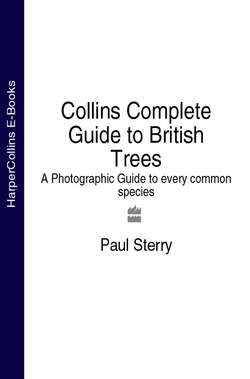Читать книгу Collins Complete Guide to British Trees: A Photographic Guide to every common species - Paul Sterry - Страница 25
BEECH WOODLAND
ОглавлениеFew trees are more successful at eliminating competition from rival species than Beech, and in mature woodland it often forms such a dense canopy that competition from other tree species is essentially eliminated. Beech will tolerate a wide range of soil types, from fairly acid to calcareous. It is arguably at its finest growing on the latter, especially when covering the slopes of chalk downs. Beech woodlands in such settings have the fitting name of ‘hangers’.
Dark and gloomy during the summer months, by contrast a Beech woodland in winter is light and airy, with colour provided by the fallen leaves.
During the summer months very little light penetrates to the woodland floor. Low light levels, combined with the dense carpet of fallen leaves that covers the ground, ensures that few woodland flowers are able to survive. Those that do are restricted mainly to clearings and rides, and in such places Sanicle, Woodruff and a number of helleborines can sometimes be found. A small group of specialist plants do grow in the deep shade of Beech woodlands: species such as the Bird’s-nest Orchid and Yellow Bird’s-nest lack chlorophyll and cannot photosynthesise, relying on a saprophytic way of life for nutrition.
For many people, Beech woods are at their best in the autumn, not only because of the stunning foliage colours but also because of the intriguing range and abundance (in wet years) of fungi. Many of these are entirely restricted to Beech woodlands and some of the associated Russula and Boletus species are extremely colourful themselves.
The Devil’s Bolete is a rare and spectacular fungus that grows beneath ancient Beech trees on chalky soil.
Although it is seen only irregularly, the Ghost Orchid is the Holy Grail for British botanists. Scouring ancient Beech woods in central England represents a naturalist’s only realistic prospect of finding one in this country.
